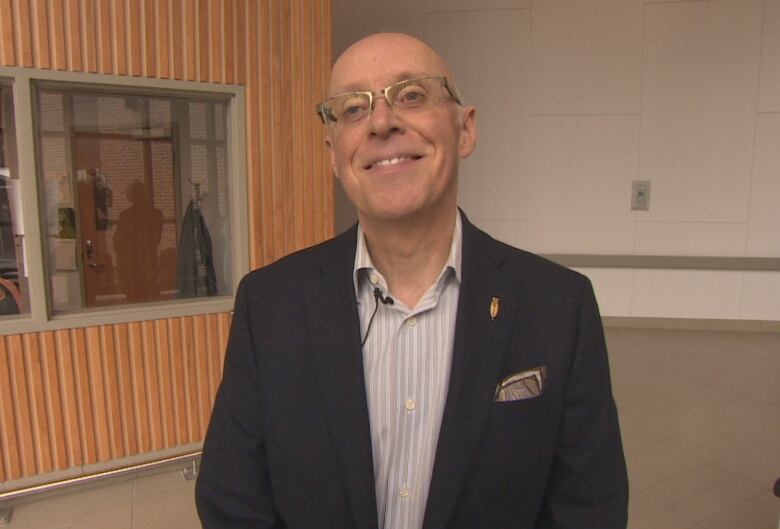Province's first PET/CT scanner promises better care for N.L. cancer patients
Strict security at state-of-the-art nuclear and molecular facility to contain radiation risks

As he watched amultimillion-dollar piece of equipment being lowered into its new home at Eastern Health in St. John's, Health Minister John Haggiesaid he was thinking about magnets.
Known as a cyclotron, and encased intons of concrete and lead, the machine uses powerful magnets to create medical isotopes.
In simpler terms, it creates radioactive material to diagnose and treat cancer and heart disease at the province's new molecular medicine facility.
"Basically it's a particleaccelerator," saidHaggieof the cyclotron, which works withthe province's first PET/CT scanner.

"The cyclotronis a way of accelerating protons in a circle by using electromagnetsand when they get enough energy, we fire them at a target and you make a radio isotope for either diagnosis or for treatment of a patient's condition."
Haggiesays the PET/CTscanner will attractthousands of patients to the Health Sciences facility from across the province.
It's estimated that, before thenew equipmentarrived, as many as 300 of those patients had to leave the province annually for the testing that only thisscannercan do.
"It's going to make diagnosis, assessment and treatment of manyconditions a lot easier," Haggiesaid.
Targeting cancer
The clinical chief of the nuclear and molecular imaging program at Eastern Health says the scanner will focus on cancer patients first.
"Patients will receive a very different type of cancer care, amuch more advanced type [of] cancer care that hopefully will impact their treatment and of course their overall survival,"said Dr. PeterHollett

The health minister says there will also be great benefits for researchin theprovince.
"It will attract high quality, high-calibre researchers," he said."It will attract medical physicistsin a way that will enable the scientific community here to benefit in spinoff ways."
No more isotope shortages
Radioactive isotopes are required for some diagnostic tests, including scans for cancer,heart disease and lung disease.
This new facility also means isotope shortages like the ones that hit medical facilities in the province in 2009 will remain things of the past.
- Isotope shortage hits central N.L. hospital
- Isotope shortage forces 'juggling act' in western Newfoundland
With a cyclotron in St. John's, Eastern Health can produce enough medical isotopes for this province and perhaps even enough to export them in the future.
Controlling the risks ofradioactive material
Like a nuclear reactor, a cyclotron creates dangerous radioactive material, but DouglasAbrams,manager of radiopharmaceuticalscience at Eastern Health, said there is an important difference.
"It's hard to turn a nuclear reactor off," Abrams said."It's always decaying and it's always producing energy and it's always producing radioactivity. So there are complicated controls to turn a nuclear reactor off.
"A cyclotron can be turned on and off like an X-ray machine So then you have control of where the isotopes are and where the radiation is."
Security at the new facility is tight because there are concerns about what could happenif radioactive material is misused.
"The concern is for people removing radio isotopes becausethe potential for a dirty bomb is here," saidAbrams.
"It'spsychological rather thanpractical because wewouldn't make enough radio isotopes to actually make a real dirtybomb but you don't have to have a real dirty bomb to have apsychologicalscare. So we have to be very secure in radio isotopes."
New equipment already in use
The total cost for construction of the new nuclear and molecular facility, buying the new PET/CT scanner, cyclotron and other equipment came to just over $46 million.
And it's being put to work.
Even Tuesday morning as politicians, clinicians and health-care administrators toured the facility, six patients were preparing to use the new equipmentlater that afternoon.
The PET/CTscanner will initially be operating eight hours a day, three days a week. It's expected that 500 exams will be performed in by the end of this year.
Eastern Health says when thefacility isoperating at full capacity by January, up to 1,500 scans will be performed annually.













_(720p).jpg)


 OFFICIAL HD MUSIC VIDEO.jpg)
.jpg)



























































































